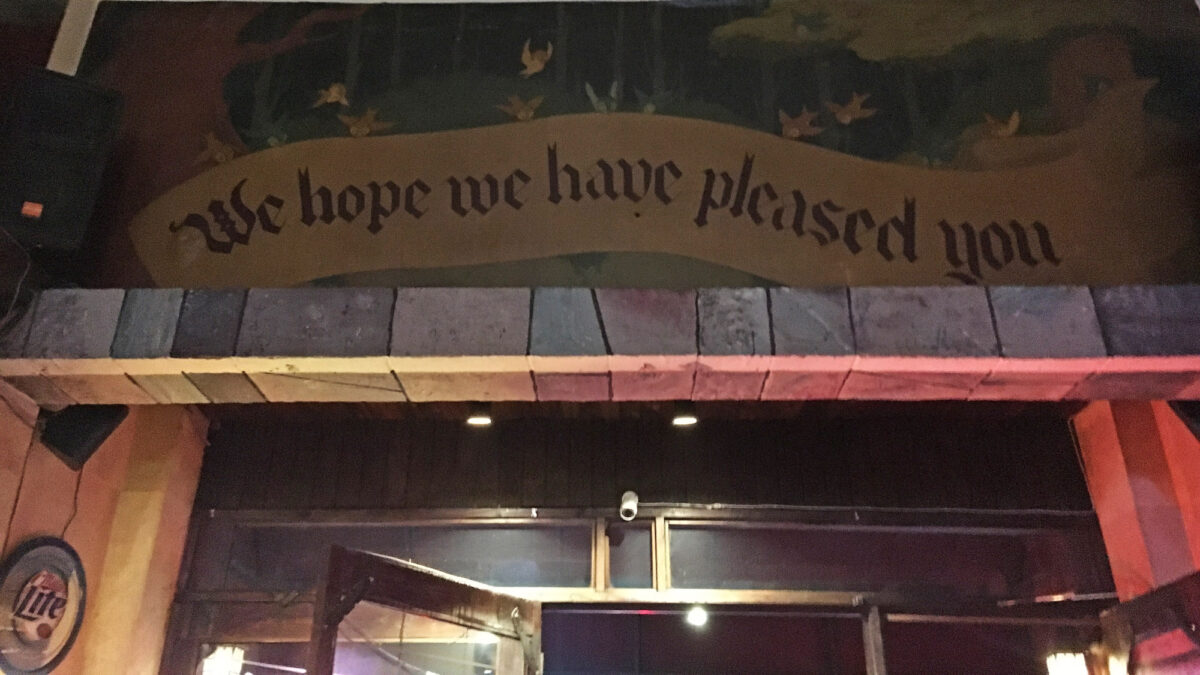GRIFFITH PARK, ETC.

See an INDEX for this series of blog posts.
In this part: The Snow White Cottages, a.k.a. Sierra Bonita / Snow White Café / Griffith Observatory / Bronson Caves / The Hollywood Sign and Sunset Ranch / The tailgating scene from Lost Highway?
THE SNOW WHITE COTTAGES, A.K.A. SIERRA BONITA
“It’s right about here on Sierra Bonita. That’s not too far away.”
In David Lynch’s movie Mulholland Drive, the Diane Selwyn character lives in the Sierra Bonita Apartments—supposedly at 2590 Sierra Bonita Avenue.
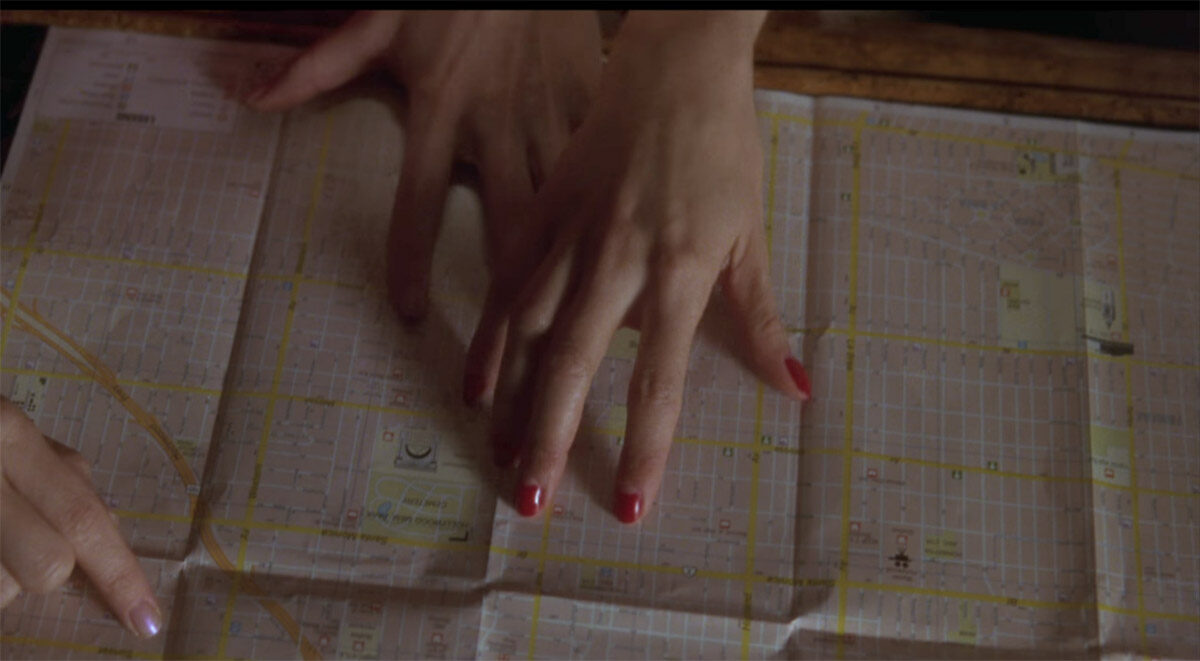
We see Betty Elms (Naomi Watts’s character in the movie’s first part) looking for the apartments on a map of Los Angeles. She points to a spot near the corner of De Longpre Avenue and Hobart Boulevard in East Hollywood, not far from the corner of Sunset Boulevard and Western Avenue. All of this geography may be purposely fictional.
In reality, Lynch filmed the Sierra Bonita scenes at a complex nicknamed the Snow White Cottages, at 2900 Griffith Park Boulevard in Central L.A.’s Los Feliz neighborhood.

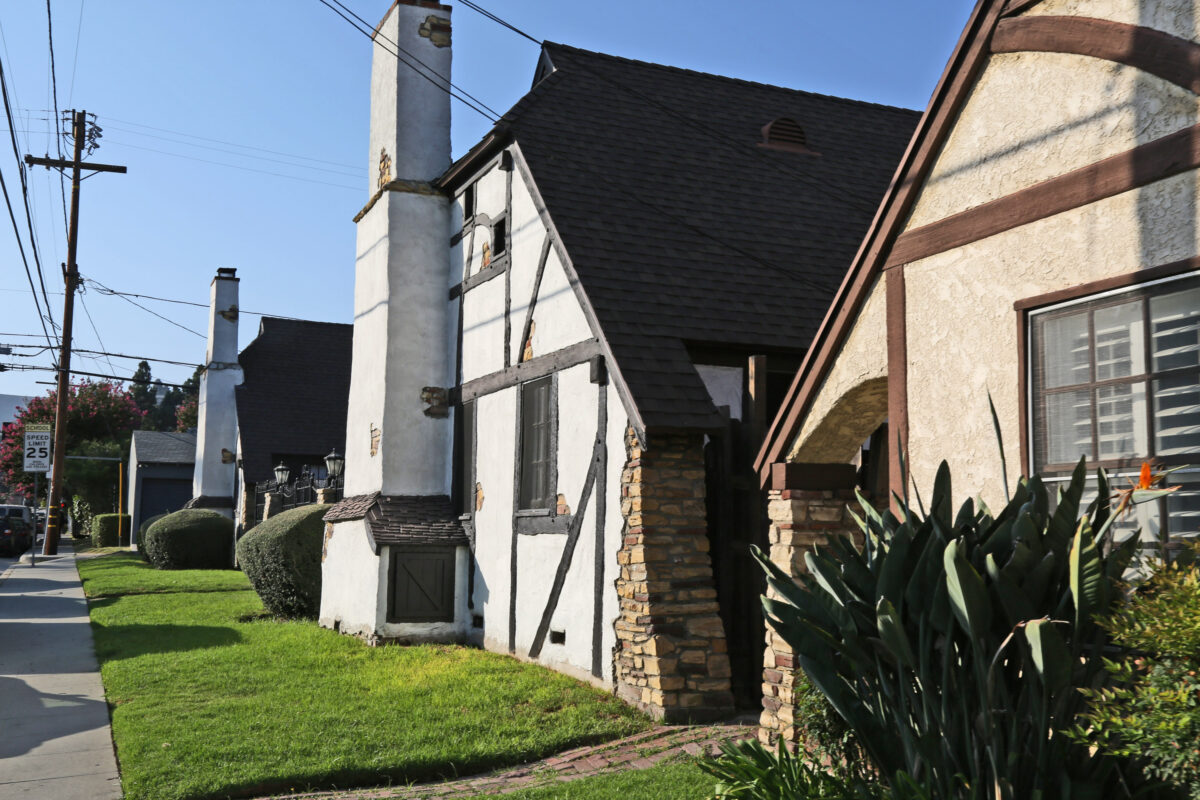
These eight cottages were constructed in 1931, a block away from where Walt Disney had opened his studio two years earlier (at 2719 Hyperion Avenue, where a Gelson’s Market grocery store is today). Disney animators lived in these 700-square-foot, one-bedroom homes, including Claude Coats and his wife, Evelyn Henry, walking to work down the street. Henry later described the cottages:
“They’re real cute. Thatched roofs and looked just like a Snow White cottage. They were all separate cottages. They were not adjoined. Everyone living there worked at the studio.”
It’s sometimes said that Walt Disney built these houses. But in reality, they were built and designed by Ben Sherwood.
According to the Finding Los Angeles website: “The Snow White cottages feature crooked roofs, timber-frame facades, picture-perfect windowboxes and landscaping, intentionally-worn chimneys, and a tower at the far end of the bungalow courtyard. For Disney’s animators who lived in and walked by these storybook cottages everyday, there’s no doubt that art imitated life through their renderings of the fairytale cottage now immortalized in Snow White and the Seven Dwarfs.“
“Oh, it’s adorable! Just like a doll’s house. I like it here. Ooh, it’s dark inside.” — Snow White and the Seven Dwarfs

I wonder: Is the connection between this filming location and Disney’s classic 1937 movie based on the Snow White fairy tale mere happenstance? Or does it have some deeper resonance for Lynch?
On another note, singer-songwriter Elliott Smith lived in two different cottages in the complex in the 1990s, but he’d moved out by the time of his death in 2003.
The Snow White Cottages are private property, of course, with a locked gate. I walked along the front of the complex and looked down the alley (where the characters in Mulholland Drive go, seeking to hide from seemingly ominous men sitting in a nearby car).


SNOW WHITE CAFÉ
During my visit to L.A. I happened upon another place with connections to Disney’s classic 1937 film Snow White and the Seven Dwarfs—the Snow White Café, a cozy little bar and restaurant on Hollywood Boulevard, where the walls are adorned with paintings of Snow White’s characters.
I asked the bartender: “What’s the deal with the Snow White theme?” He told me Disney’s animators used to hang out at the café, which opened in 1946, and that Walt Disney himself donated the artwork. This story seems to be more or less true, according to an article on the Only in Hollywood website.
The bartender also told me that the joint had been a speakeasy during the Prohibition Era, owned by Charlie Chaplin. (I’d want to see solid evidence before I buy that story.)
GRIFFITH OBSERVATORY
As I noted above, those Snow White Cottages where Lynch filmed scenes for Mulholland Drive are on Griffith Park Boulevard. If you follow that winding street north for a mile, you’ll arrive at Griffith Park itself. With 4,310 acres of mountainous terrain, it’s one of the nation’s largest urban parks, nearly five times the size of New York City’s Central Park. (An article at KCET’s website outlines the history of Griffith Park.)
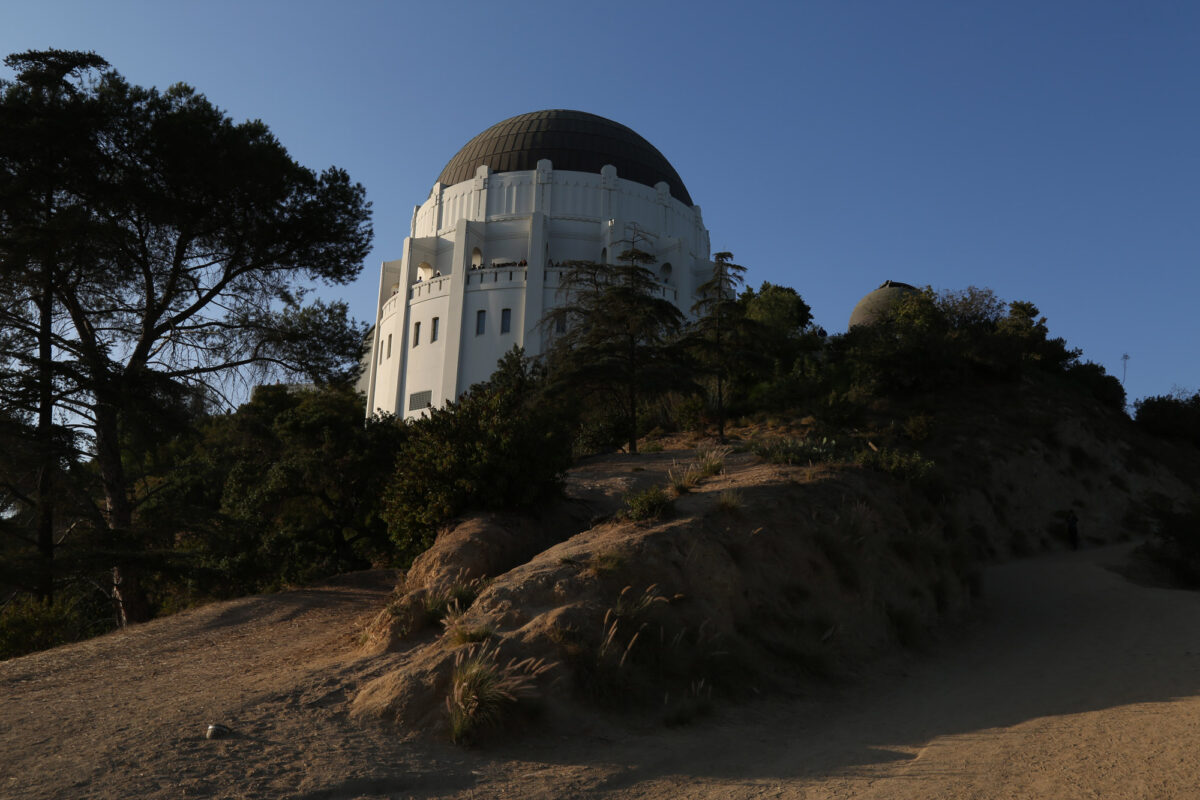

Not surprisingly, this park has a starring or cameo role in many Hollywood movies. One of its most famous features is the Griffith Observatory, which opened in 1935. This beautiful structure, including a planetarium and a telescope that’s open for free viewing in the evenings, is a signature location in 1955’s Rebel Without a Cause—a role that’s commemorated with a bust of James Dean. (Are those racing cars in Mulholland Drive—the ones that crash into the limo in the opening scene—a nod to the “chickie run” scene in Rebel Without a Cause?)
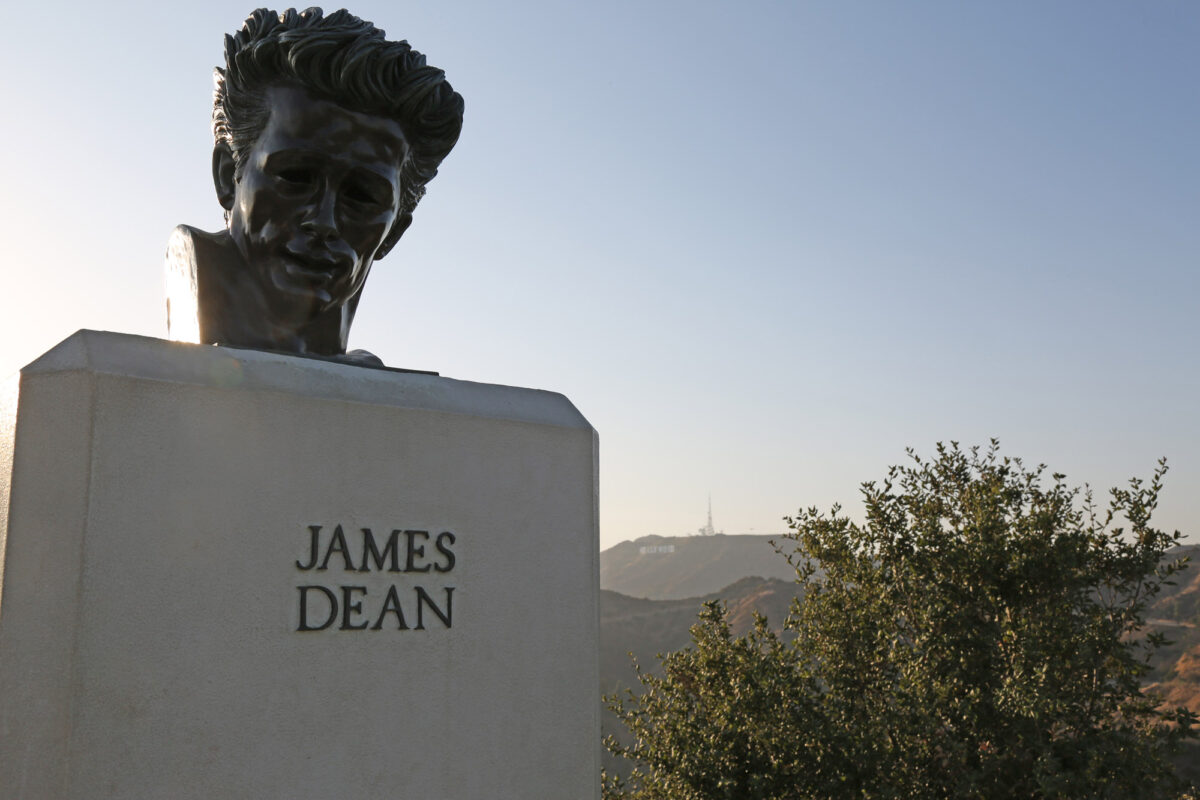
Griffith Observatory is also where the time-traveling cyborg played by Arnold Schwarzenegger arrives in 1984’s The Terminator. More recently, it appears in La La Land and Under the Silver Lake, in which Andrew Garfield’s character Sam decodes a secret message in a song:
“Rub Dean’s head and wait under Newton.”
In those films, the characters seem to have Griffith Observatory’s grounds to themselves. But when I visited, it was crowded with tourists. It’s a delightful place to look out at L.A.’s landscape, especially as the sun goes down and the city’s lights turn on.
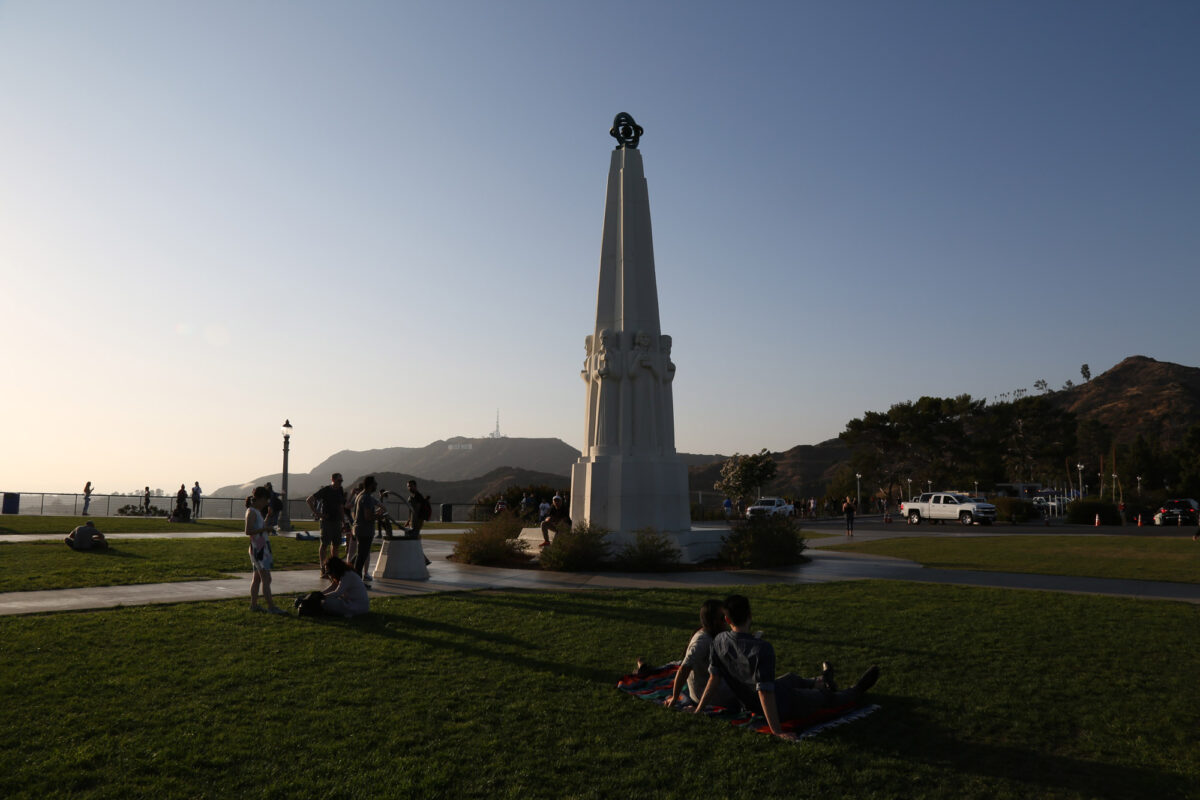


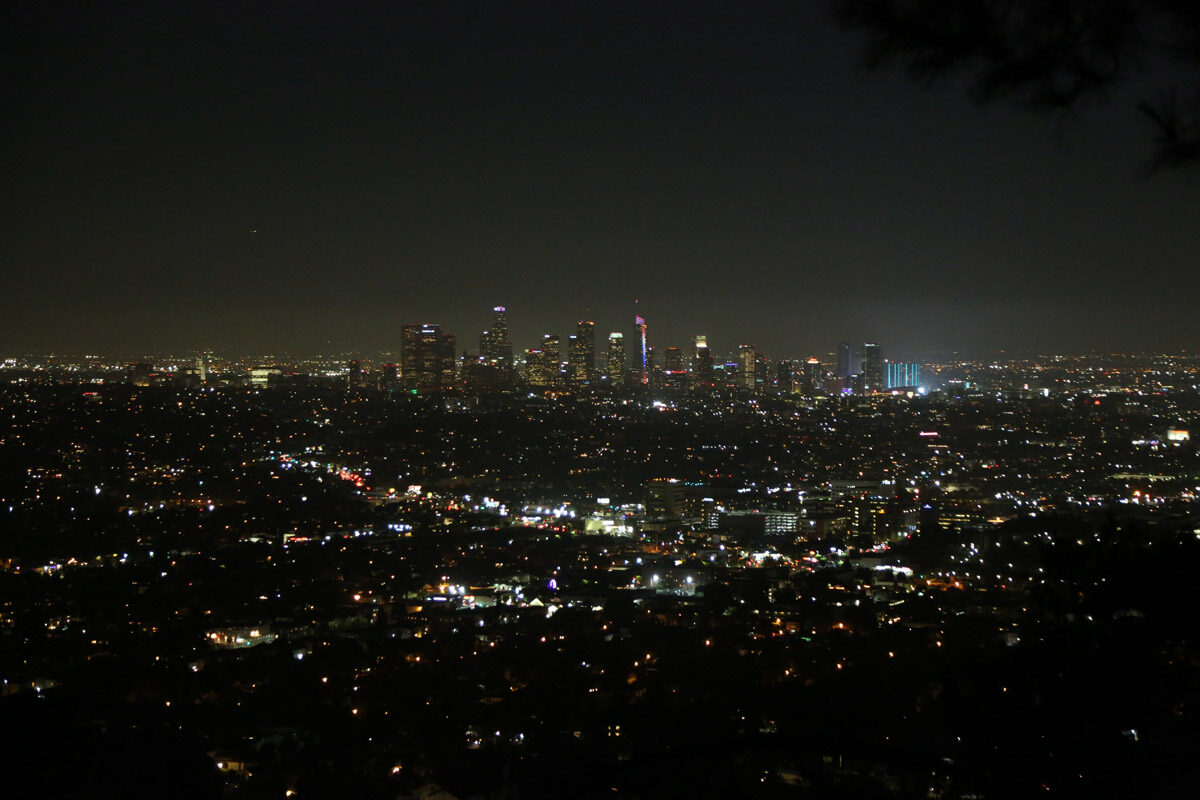
BRONSON CAVES
The Bronson Caves are in another area of Griffith Park. This is where the Owl Cave scenes were filmed for Season 2 of Twin Peaks—and, more famously, the mouth of the caves appears as the Bat Cave entrance in the 1960s Batman TV series.
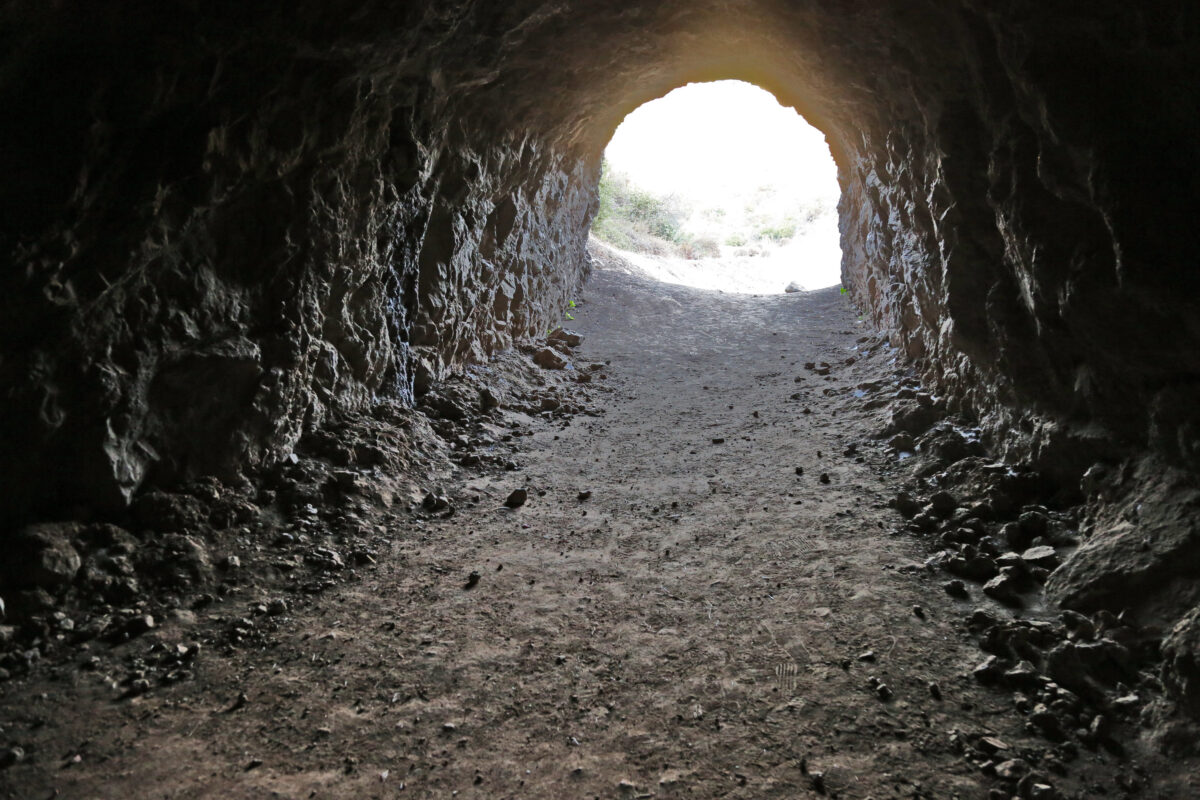
This man-made tunnel is a remnant of a rock quarry opened by Union Rock Company in 1903. It takes only about a minute to walk through the main corridor, as you can see in this video I made:
Wikipedia observes: “Scenes of the main cave entrance are normally filmed in a manner that shows the entrance at an angle because the cave is actually a very short tunnel through the hill, with the rear opening easily visible in a direct shot.”
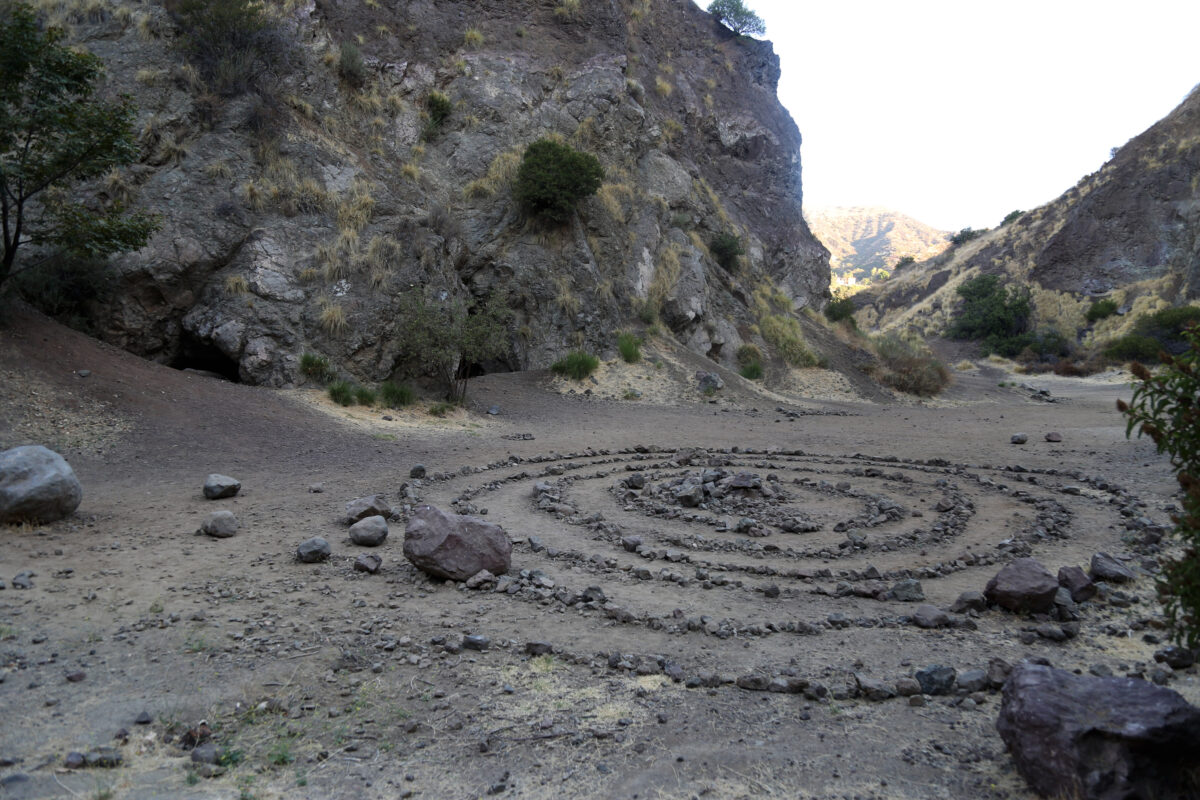
As the Los Angeles Department of Recreation and Parks website notes, this is “not a spectacular cavern like Carlsbad Caverns in New Mexico or Mammoth Cave in Kentucky.”
And yet, thanks to its proximity to Hollywood, the Bronson Caves have appeared in hundred of movies and television shows—including two classics from 1956: In the finale of John Ford’s The Searchers, John Wayne pursues Natalie Wood to the cave’s entrance. And it’s also where Kevin McCarthy’s character hides out in Invasion of the Body Snatchers, only to make a horrifying discovery about his companion, Becky (Dana Wynter).
“I went to sleep, Miles, and it happened.”
“Oh, Becky.”
“They were right.”
Robert Altman filmed a disturbing scene for the climatic moments of 1993’s Short Cuts nearby. More recently, Bronson Caves appear in Hail, Caesar! and Under the Silver Lake.
THE HOLLYWOOD SIGN AND SUNSET RANCH

Next to Bronson Caves and Bronson Canyon, a walking trail leads up to a couple of places with scenic views of the Hollywood Sign. I walked up 1.9 miles to the end of the Hollyridge Trail on Mount Lee, where you can see that iconic sign as well as a location from Lynch’s Mulholland Drive: Sunset Ranch.
This is where Adam Kesher (Justin Theroux) goes at night for a meeting with the enigmatic figure called the Cowboy (Lafayette “Monty” Montgomery).
“Where do I meet this Cowboy? I mean, do I have to ride out to the range?”
“Sort of, funny boy. If I tell him the meeting’s on, you have to go to the top of Beachwood Canyon. There’s a corral up there where he’ll be.”
“You’ve got to be kidding me.”

It’s striking how close Sunset Ranch is to the Hollywood Sign. That proximity isn’t apparent in the movie, although Lynch cuts from the nighttime scene directly to a daytime image of the sign. During my visit, I heard horses neighing below me in the private ranch, which offers horse rides on the nearby mountain trails.


Hope Anderson, the director of a documentary called Under the Hollywood Sign, writes: “While the Ranch is not as scary in daylight as it was in Mulholland Dr., it is believed to be haunted. I had already heard stories of a “weird, dark energy” from someone who spent a lot of time there as a child. …
“I interviewed a former Sunset Ranch riding instructor who told me of spending the night in one of the rooms over the barn and hearing a man being hanged, along with choking sounds and the vibration of the rope. …
“Then there’s the strange, wafting scent of gardenias each autumn. Riders and ranch employees report smelling gardenias on the trails in mid-September, near the anniversary of Peg Entwistle’s suicide off the Hollywoodland Sign. No gardenias grow in the area, but Peg wore gardenia perfume.”
Entwistle, a New York stage actress who came to Hollywood and failed to land any of the movie roles she’d dreamed of, climbed 50 feet up a workman’s ladder to the top of the “H” and jumped to her death in 1932.



Eleven years earlier, the Hollywood Chamber of Commerce had published an advertisement discouraging people from flocking to Hollywood in the hope of becoming movie stars.

When Los Angeles Times publisher Harry Chandler had the sign built in 1923, it originally said “HOLLYWOODLAND”—the name of a real estate development he was advertising.
The sign makes me think of Eden Ahbez (or “eden ahbez,” as he usually styled his name), the songwriter and proto-hippy who wrote the song “Nature Boy.” Legend has it that Ahbez was living under the first “L” of the “HOLLYWOODLAND” sign in 1947, when he managed to get his song into the hands of Nat King Cole, who turned it into a No. 1 hit.
On his blog about Ahbez, Brian Chidester reports: “According to old-time California nature boy Bob Wallace, Ahbez used to camp out next to a shack up there in his sleeping bag, where he’d also sit and hold his hand-carved bamboo flutes up to the wind to let nature play its own song!”

As I walked down the trails in Griffith Park after seeing the Hollywood Sign, I encountered a coyote crossing the roadway:
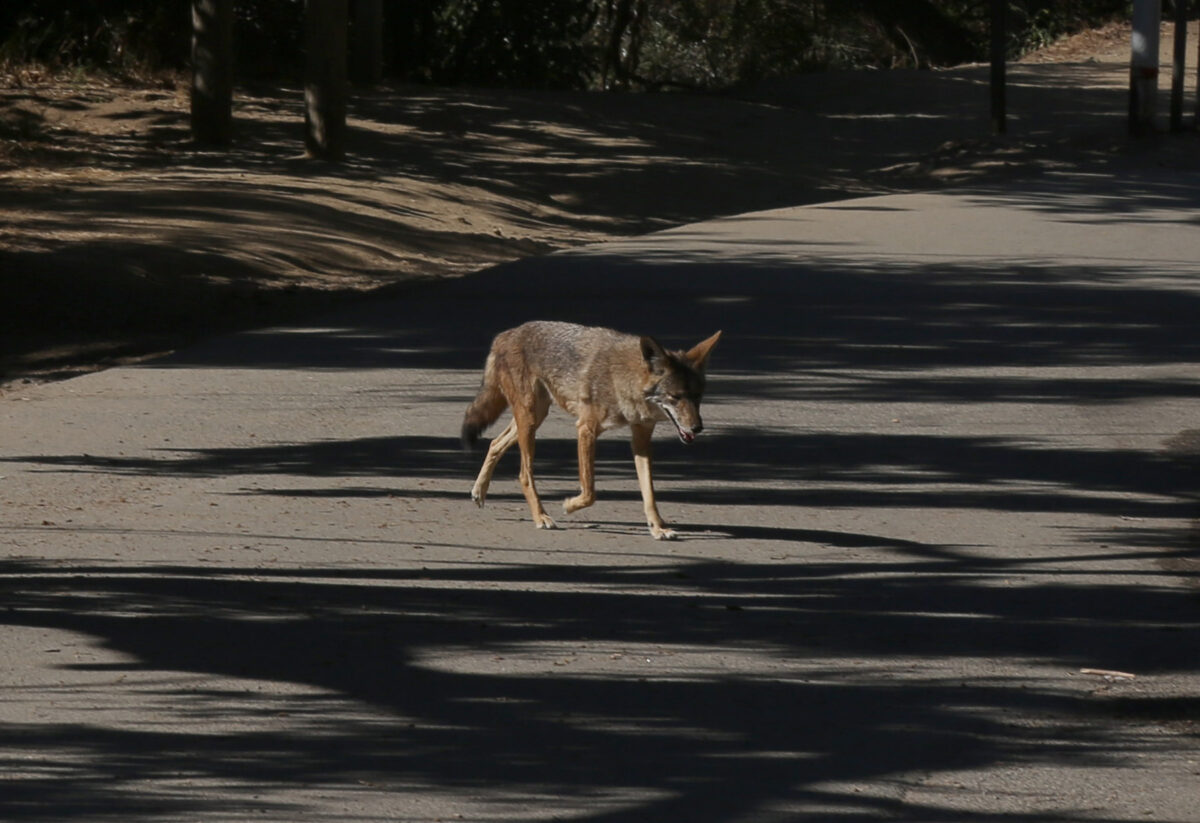
THE TAILGATING SCENE FROM LOST HIGHWAY?
In David Lynch’s 1997 film Lost Highway, tough guy Mr. Eddy (Robert Loggia) beats up a motorist who was tailgating him.
“Don’t you ever fucking tailgate! Ever! Ever! Do you know how many fucking car lengths it takes to stop a car at 35 miles an hour?! Six fucking car lengths! That’s 106 fucking feet, mister! If I had to stop suddenly, you would’ve hit me!”

I haven’t found information about exactly where this scene was filmed. It takes place on a two-lane road curving through the mountains, much like Mulholland Drive. The Hollywood Sign is visible in the background during the violent assault along the road’s shoulder.
Judging from where the sign is in the background, I’m guessing the scene was filmed in Griffith Park—maybe on Mount Lee Road?

Incidentally, you may notice a spot labeled as The Last House on Mulholland on the Google satellite image above. As of now, it’s actually a vacant lot, but this design won first place in a 2017 architectural contest for the site:
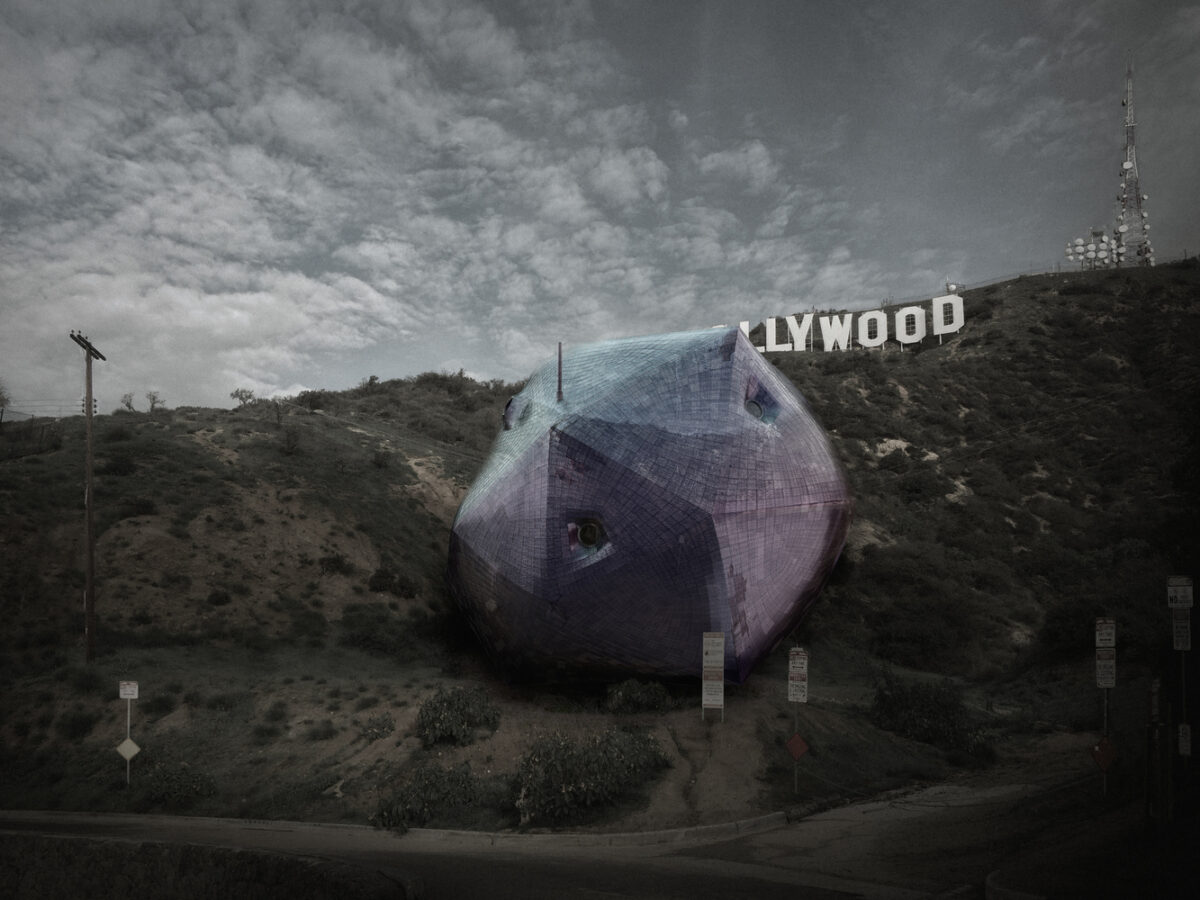
See an INDEX for this series of blog posts.
Photos by Robert Loerzel unless noted otherwise.


